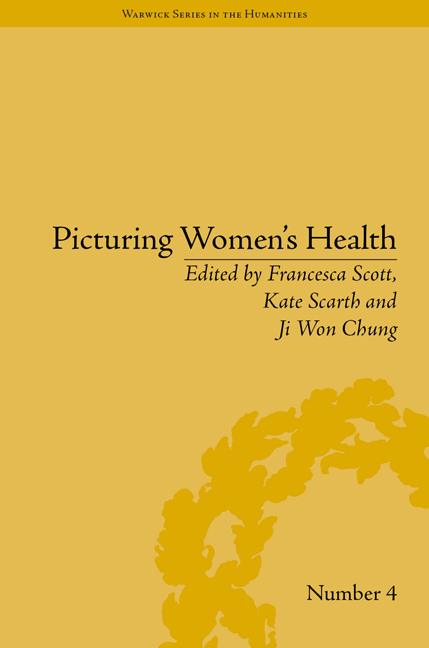Book contents
- Frontmatter
- CONTENTS
- Acknowledgements
- List of Contributors
- List of Figures
- Introduction: Picturing Women's Health
- 1 Sensibility and Good Health in Charlotte Smith's Ethelinde
- 2 Amazonian Fashions: Lady Delacour's (Re)Dress in Maria Edgeworth's Belinda
- 3 Transforming the Body Politic: Food Reform and Feminism in Nineteenth-Century Britain
- 4 Stagnation of Air and Mind: Picturing Trauma and Miasma in Charlotte Brontë's Villette
- 5 The Iconography of Anorexia Nervosa in the Long Nineteenth Century
- 6 Kate Marsden's Leper Project: On Sledge and Horseback with an Outcast Missionary Nurse
- 7 Constructs of Female Insanity at the Fin de Siècle: The Lawn Hospital, Lincoln, 1882–1902
- 8 The Fitness of the Female Medical Student, 1895–1910
- 9 Unstable Adolescence/Unstable Literature? Managing British Girls' Health around 1900
- NOTES
- Index
5 - The Iconography of Anorexia Nervosa in the Long Nineteenth Century
- Frontmatter
- CONTENTS
- Acknowledgements
- List of Contributors
- List of Figures
- Introduction: Picturing Women's Health
- 1 Sensibility and Good Health in Charlotte Smith's Ethelinde
- 2 Amazonian Fashions: Lady Delacour's (Re)Dress in Maria Edgeworth's Belinda
- 3 Transforming the Body Politic: Food Reform and Feminism in Nineteenth-Century Britain
- 4 Stagnation of Air and Mind: Picturing Trauma and Miasma in Charlotte Brontë's Villette
- 5 The Iconography of Anorexia Nervosa in the Long Nineteenth Century
- 6 Kate Marsden's Leper Project: On Sledge and Horseback with an Outcast Missionary Nurse
- 7 Constructs of Female Insanity at the Fin de Siècle: The Lawn Hospital, Lincoln, 1882–1902
- 8 The Fitness of the Female Medical Student, 1895–1910
- 9 Unstable Adolescence/Unstable Literature? Managing British Girls' Health around 1900
- NOTES
- Index
Summary
In 2010 the French model and actress Isabelle Caro died from complications arising as a result of her fifteen-year struggle with anorexia nervosa. Three years prior to her death, as a statement against the fashion industry's promotion of excessive thinness, Caro's naked image was displayed on billboards in Italy to coincide with Milan Fashion Week, carrying the message ‘No Anorexia’. Caro claimed that she weighed around 27 kg (59lb) at the time. Previously, in 2006-7 three South American models in their early twenties had starved themselves to death: the Brazilian Ana Carolina Reston and sisters Eliana and Luisel Ramos from Uruguay, resulting in widespread criticism of the use of ‘size 0’ models and placing the issue of the visibility of anorexia firmly on the public agenda.
Regrettably, Caro is more famous for her anorexia than for her acting or modelling career, which reveals something of the extent of public fascination with this disease. Anorexia is marked by a visibility shared by few other illnesses, with only severe skin disorders and facial disfigurements being as visually striking. Its presence in cultural imagery therefore holds a peculiar significance, a unique ability to make an arresting statement about how women inhabit their bodies. Today, the iconography of the disease exists predominantly in the domain of popular culture: a Google search will produce millions of images of emaciated young women, for the most part published in unofficial blogs and controversial pro-anorexia (‘pro-Ana’) forums. Conversely, however, contemporary mainstream medical and psychiatric journals never reproduce photographs of anorexic women.
But this has not always been the case. During the period 1873–1914, there was a surge of interest in an illness found among young girls from the privileged classes, characterized by the refusal of food and extreme emaciation, and which seemed distinct from organic wasting illnesses such as chlorosis and tuberculosis.
- Type
- Chapter
- Information
- Picturing Women's Health , pp. 77 - 104Publisher: Pickering & ChattoFirst published in: 2014

